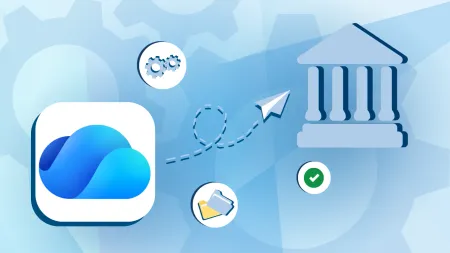Create a Disaster Recovery Checklist With Microsoft Azure
Disaster recovery protects you against catastrophic data loss in the event of a major disaster. To assure your data is recoverable — no matter the circumstances — you should define the minimum level of functionality needed during a disaster and implement a plan to mitigate risk...

Disaster recovery protects you against catastrophic data loss in the event of a major disaster. To assure your data is recoverable — no matter the circumstances — you should define the minimum level of functionality needed during a disaster and implement a plan to mitigate risk. To help you get started, we devised a disaster recovery checklist that covers key considerations you’ll need to make.
Downplay Risk With a Disaster Recovery Checklist
Assess the Issue and the Impact
Each disaster and environment is different. You should implement the best practices for high availability with considerations for cost, complexity and risk assessment. Before you do anything, you need to understand the issue and its impact on your system. Is the issue on your local machines or does it reside on the regional Azure server? Have files become corrupt or deleted?
Azure has built-in availability features and resiliency technical guidance that was developed to support disaster recovery. The management of roles across different fault domains is one way Microsoft increases the availability of applications after a disaster. Your business may need access to certain applications, which makes them more critical than others and would justify the need to architect them for disaster recovery.
Establish Recovery Goals
Fast and seamless recovery is the goal after a disaster strikes. Map out your road to recovery by deciding to restore the system, data or both. Consider the time spent to recover files and folders prior to a system recovery by estimating or testing response times in disaster scenarios.
Azure has datacenters in multiple regions around the world. This type of infrastructure supports multiple disaster recovery scenarios. One of the scenarios includes the geo-replication of Azure storage to a secondary region to minimize recovery time.
Plan for Multiple Disaster Scenarios
Azure’s DR features augment different scenarios with application-specific strategies. Consider some of the many possible causes that lead to a failure during both the design and test phases of a recovery plan. The preferred response is driven by the importance of each application, the recovery objective and recovery time objective.
Route Traffic Automatically to Avoid Application Failure
When a regional datacenter fails, traffic must be redirected to another region. You can do this routing manually or automatically. Automated traffic routing is ideal and made possible through Azure Traffic Manager (ATM). ATM will automatically manage failover of traffic to a different region if a disaster or failure occurs.
Prevent Data Corruption
Azure helps protect against data corruption by storing Azure SQL Database and Azure Storage three times in different fault domains in the same region. If one of your files is corrupt, you’ll have two other backups you can restore. If you’re using geo-replication, the data is stored three more times in a different region.
Prepare for Network Outages
When you cannot access parts of Azure, you might have issues accessing applications or data. Azure uses any available role instance of applications when network issues arise. If an application cannot access the data due to an Azure network outage, you can run the application in degraded mode locally through cached data and continue to operate until the network is restored. Any changes are automatically uploaded once the network is available again.
Plan for Service Failures
Microsoft knows some of Azure’s services experience periodic downtime. This is why Azure provides caching capabilities to applications. You should consider what would happen if an application becomes unavailable. Similar to a network outage, each service should be treated independently.
Select the Appropriate Recovery for Your Business
Your road to disaster recovery must include a proper recovery procedure — including file resources and off-site/onsite virtualization. Do you employ virtualization? What files can your business not operate without?
Regular backups of application data support many of the disaster scenarios mentioned. Different resources require various methods of storage. Each Basic, Standard and Premium SQL Database tier has different point-in-time restoration methods to recover databases. You can visit the Azure Channel Pricing Calculator to calculate costs associated with each restoration method and the Azure backup calculator to estimate your backup costs.
Verify Recovery and Confirm Restored Functionality
Once recovery is verified, confirm with all users and perform connectivity and data restore tests. Ensure all users have restored access to data and applications on the virtual environment. You should implement the best practices for high availability with considerations for cost, complexity and risk assessment.
Perform a Self-Assessment After the Recovery
After your business has experienced a disaster and recovered from it, record any lessons learned from the event. Answer the following questions: What went right? What went wrong? What needs improvement for next time? You can use the disaster recovery checklist plan to improve issues for future disasters.
Creating a disaster recovery checklist with Azure will protect your organization from needless data loss, downtime and potentially catastrophic business impacts. Unfortunately, managing daily IT issues prevents many organizations from implementing proper DR best practices and documenting a plan. Agile IT’s Azure backup and recovery services give you peace of mind that your data will successfully restore — and you have a plan in place to mitigate risk.
If you’re ready to take the next step with disaster recovery, reach out to Agile IT today.





